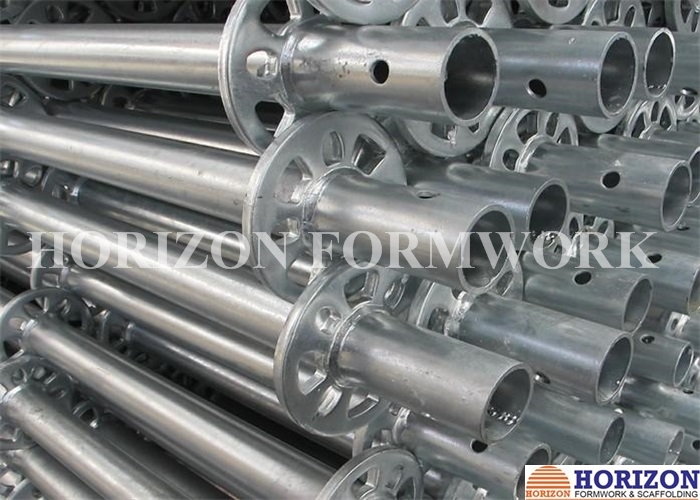Dec . 09, 2024 16:45 Back to list
industrial scaffolding available for purchase from leading manufacturers and suppliers
Industrial Scaffolds for Sale A Vital Component for Modern Industrial Operations
In the realms of construction and maintenance, the significance of scaffolding cannot be overstated. Industrial scaffold systems play a crucial role in ensuring safety, efficiency, and accessibility on job sites. As industries continue to evolve and expand, the demand for high-quality scaffolding solutions has intensified. This article aims to explore the various types of industrial scaffolds available for sale, their applications, and the factors to consider when purchasing them.
Understanding Industrial Scaffolding
Industrial scaffolding refers to the temporary structures erected to support work crews, materials, and equipment during the construction, maintenance, or repair of buildings and other infrastructure. Unlike traditional scaffolding, industrial scaffolding is designed to handle heavier loads and provide much greater stability, making it ideal for large projects. Common applications include oil refineries, power plants, bridges, and high-rise buildings.
Types of Industrial Scaffolds
1. Frame Scaffolding This is perhaps the most common type of industrial scaffold, composed of vertical posts, horizontal rails, and diagonal braces. Frame scaffolding is versatile, easy to assemble, and can be adjusted to various heights, making it suitable for numerous applications.
2. Suspended Scaffolding Often used for tall structures, this type involves platforms that are suspended from ropes or other support systems. It's particularly effective for high-rise buildings, allowing workers to access areas that are otherwise difficult to reach.
3. Rolling Scaffolding Designed with wheels or casters, rolling scaffolds offer mobility and can be easily moved around the job site. They are ideal for projects requiring frequent relocation, such as painting or electrical work.
4. System Scaffolding This type features modular components that can be assembled in various configurations. System scaffolding is adaptable and offers enhanced strength, making it suitable for complex structures or unique project requirements.
5. Bamboo Scaffolding Primarily used in Asia, bamboo scaffolding is a sustainable option that is both lightweight and strong. It is often employed in traditional construction projects but has gained attention in modern industrial settings due to its eco-friendly characteristics.
industrial scaffold for sale factories

Factors to Consider When Purchasing Industrial Scaffolds
1. Load Capacity The first consideration should always be the scaffold's load capacity, which directly impacts safety. Ensure that the scaffold can support the weight of workers, tools, and materials without risking failure.
2. Materials Industrial scaffolds are constructed from various materials, including steel, aluminum, and wood. Steel scaffolding offers durability and strength, while aluminum is lightweight and resistant to corrosion. The choice of material will depend on the specific project requirements.
3. Safety Standards Compliance with safety regulations is paramount. Check if the scaffolding meets local and international safety standards, such as OSHA regulations in the United States or EN standards in Europe. Proper certification can help mitigate safety risks.
4. Ease of Assembly The scaffold should be easy to assemble and disassemble. Look for systems that offer clear instructions and require minimal tools for setup.
5. Cost Industrial scaffolds come in a range of price points. While it may be tempting to choose the cheapest option, consider the long-term investment in quality and safety. Cheaper scaffolding may not hold up as well under pressure or adverse conditions.
6. Supplier Reputation When purchasing industrial scaffolds, work with reputable suppliers who provide high-quality products and reliable customer service. Explore customer reviews and request recommendations from industry peers.
Conclusion
As industries continue to grow and develop, the demand for reliable and efficient scaffolding solutions will remain a critical factor in construction and maintenance operations. Industrial scaffolds for sale come in various types, each suited for different applications and environments. By considering factors such as load capacity, materials, safety standards, ease of assembly, cost, and supplier reputation, businesses can ensure they choose the right scaffolding solutions for their specific needs. Investing in quality scaffolding not only enhances safety but also improves overall productivity on job sites, ultimately contributing to successful project completion.
-
High-Quality U Head Jack Scaffolding – Reliable Scaffolding Jack Head Manufacturer & Factory
NewsJul.08,2025
-
High-Quality I Beam H20 Leading Timber Beam H20 Material Factory, Exporters & Manufacturers
NewsJul.08,2025
-
High-Quality Powder Coating Steel Formwork - Durable & Corrosion Resistant Solutions
NewsJul.07,2025
-
Inclined Column Formwork Supplier – Durable & Precise Solutions for Unique Structures
NewsJul.07,2025
-
High-Quality Water Stop Solutions Trusted Water Stop Company & Suppliers
NewsJul.07,2025
-
High-Quality Formwork Material Supplier Reliable Manufacturer & Factory Solutions
NewsJul.06,2025